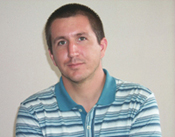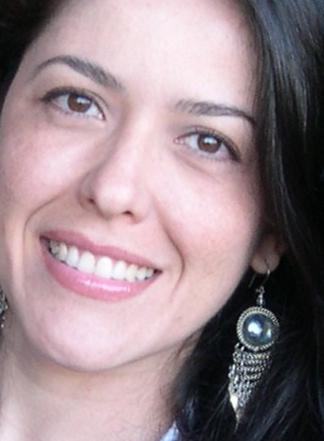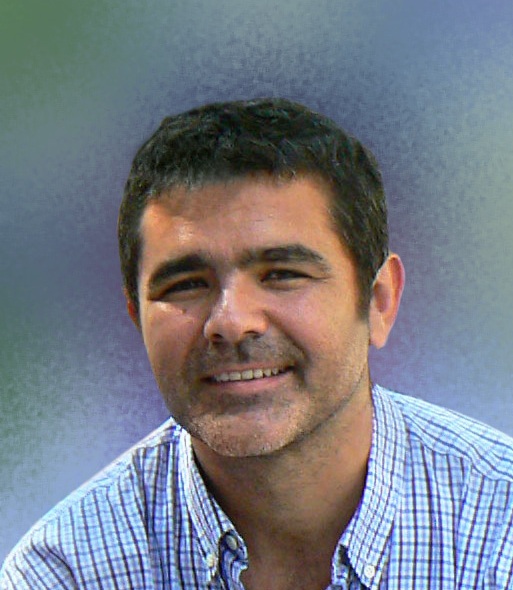Fernanda B. Viégas,(Flowing Media), título: Visualização pública: transformando o acesso à informação, palestra plenária
David R Millen (IBM T. J. Watson Research Center – Cambridge), título: Social Computing in the Global Workplace: Connecting People and Connecting Work, palestra SBSC e IHC
Michele Colajanni (Dipartimento di Ingegneria dell’Informazione – Università di Modena e Reggio Emilia), título: The Web in the Cloud, palestra Webmedia
Demi Getschko (NIC.br), título: O Futuro da Internet no Brasil e no Mundo, palestra Webmedia
Francis Quek (Virginia Tech), título: Embodied Media: Language, Social Interaction, and Tactile, palestra IHC
Reinaldo Ferraz (NIC.br), título: Acessibilidade na web e padrões WCAG 2.0. Por uma web para todos, palestra IHC
SBBD 2010 Tutorials, palestra SBBD
Palestrantes Internacionais
Title: Visualização pública: transformando o acesso à informação(topo↑)
Palestra plenária

Fernanda B. Viégas
(Google)
Abstract: Historicamente, o acesso a visualização de dados sempre se restringiu a elites acadêmicas, profissionais e ao governo. Essa é uma tecnologia considerada “séria”, criada por experts para experts. Recentemente, contudo, a visualizações na web—que vai desde projetos de arte até manchetes de jornal—tem atingido a um público de milhões de pessoas. Ao mesmo tempo, iniciativas governamentais em diversos países apontam para um futuro de maior transparência de informações. Que cara terá essa nova era? E quais são as implicações para aqueles que trabalham com dados?
Essa palestra discutirá resultados de minha pesquisa em análise coletiva de dados e visualização. Vários desses resultados vêm do Many Eyes, um site público e experimental onde qualquer pessoa pode carregar dados, criar visualizações interativas e iniciar conversas a partir dos gráficos que criou. Discussões políticas, ativismo social, conversas religiosas, gaming e trocas educacionais são algumas das coisas acontecendo no site. Proponho que a natureza pública dessas atividades cria um canal alternativo para o entendimento político e social do mundo que nos cerca.
Short bio: Fernanda Viégas lidera, junto com Martin Wattenberg, o grupo de visualização “Big Picture” do Google em Cambridge, Massachusetts. Antes de se ingressarem no Google, os dois fundaram o Flowing Media, um estúdio de visualização focado em mídia e orientado ao público em geral. Antes da Flowing Media, Fernanda e Martin lideravam o Visual Communication Lab da IBM, onde criaram o Many Eyes, uma plataforma pioneira de visualização pública.
Fernanda é conhecida por projetos inovadores que visualizam a evolução da Wikipédia, conversas de chatrooms e arquivos de e-mail. Fernanda também é conhecida por suas visualizações artísticas, exibidas em lugares como o Museu de Arte Moderna Art em Nova York, o Instituto de Arte Contemporânea em Boston e o File Festival em São Paulo.
Title: Social Computing in the Global Workplace: Connecting People and Connecting Work (topo↑)
Eventos SBSC e IHC

David R Millen
(IBM T. J. Watson Research Center – Cambridge)
Abstract: The rapid and widespread growth of social software in organizational and work settings has presented new challenges and opportunities. In this talk, several IBM “venture research” projects will be discussed in which social software has been specifically designed for business use and evaluated in large-scale field trials. These include a social bookmarking and social search service, a social networking application, and a social file sharing application. Three main topics will be explored in detail. First, I will describe the design challenges and solutions for successful end-user adoption and acceptance of these novel systems. The use of hybrid recommenders, which combine social proximity and topical relatedness, will be shown to promote both the creation of new content as well as to boost consumption of existing information. Incentive systems and crowdsourcing techniques will also be discussed as additional mechanisms to enhance system use. Next, I will discuss some of the challenges of governance in these social applications within work settings. Issues such as spamming behavior and appropriate (and inappropriate) use policies will be explored. And finally, I will discuss and prevent evidence of how these new social applications enable increasing interaction among work populations that differ along many dimensions, including geography, language, organization and job role. Some recent work on inter-cultural collaboration in a globally distributed company will be discussed.
Short bio: David Millen is a research manager in the Collaborative User Experience group at IBM Research in Cambridge, MA. His group develops new social software applications, and explores the social, business, and technological implications of these new tools through field studies with small teams and communities. Recent projects include dogear social bookmarking service, cattail personal file sharing and the beehive social networking application. Prior to joining IBM, David worked at AT&T Labs, where he explored how new technologies changed employee work activities, organizational roles, and patterns of communication.
Title: The Web in the Cloud (topo↑)
Evento Webmedia

Michele Colajanni
(Dipartimento di Ingegneria dell’Informazione – Università di Modena e Reggio Emilia)
Abstract: The success of the Web technologies has caused an evolution of the resources and services that are disseminated through the Internet and of the infrastructures to provide them. The initial static contents have been enriched by larger amounts of multimedia and dynamically generated resources, and by user generated contents. The overall complexity is being further increased by ubiquitous Web that should allow access to services from any location through every class of devices. These new models cause new performance and availability problems to the infrastructures that have to generate and disseminate the resources, but they also offer novel service opportunities especially if combined with cloud computing technology that is emerging as an interesting paradigm for scalable, fault-tolerant and elastic computing over geografically distributed data centers. We provide our perspective on this continuosly evolving scenario, evidence some of the opportunities that can be exploited, and conclude with some remarks about the future trends.
Short bio: Michele Colajanni is a full professor in the Department of Information Engineering at the University of Modena, Italy. He received the Laurea degree in computer science from the University of Pisa, and the Ph.D. degree in computer engineering from the University of Roma. He has held research grants with the National Research Council, visiting scientist appointments with the IBM T.J. Watson Research Center, Yorktown Heights, New York, and the University of Leuven, Belgium, and industrial consultant positions in high performance computer systems areas. He directs the Interdepartment Research Center on Security (CRIS) and the WEBlab reasearch group. His research expertise is in the areas of large Web systems and infrastructures, performance analysis, and security of distributed systems. During his career, he has served extensively on the Program Committees of international conferences, symposia and workshops, and has published more than 150 papers. Home page: http://weblab.ing.unimo.it/people/colajanni
Title: O Futuro da Internet no Brasil e no Mundo (topo↑)
Evento Webmedia

Demi Getschko
(NIC.br)
Abstract:
Short bio: engenheiro eletricista formado pela Escola Politécnica da USP (1975), com mestrado (1980) e doutorado (1989) em Engenharia pela mesma instituição. Trabalhou no Centro de Computação Eletrônica (CCE) da USP (1971-1985) e no Centro de Processamento de Dados da FAPESP (1986-1996), nesse período foi coordenador de operações da RNP e participou do esforço da implantação de redes no país. Foi um dos responsáveis pela primeira conexão TCP/IP brasileira, que ocorreu em 1991, entre a FAPESP e a ESNet (Energy Sciences Network), nos Estados Unidos, por meio do Fermilab (Fermi National Accelerator Laboratory).
Foi Diretor de Tecnologia da Agência Estado, empresa do Grupo Estado, em dois períodos: entre 1996 e 2000, e novamente entre 2002 e 2005.
Foi Vice-Presidente de Tecnologia do IG entre 2000 e 2001. Foi, ainda, professor da Escola Politécnica da USP, e hoje é Professor Associado da Pontifícia Universidade Católica de São Paulo, onde leciona Arquitetura de Computadores e onde também coordena o laboratório da camada 2 do Projeto KyaTera. Atuou como membro da diretoria da ICANN (Internet Corporation for Assigned Names and Numbers) pela ccNSO (Country Code Names Support Organization), eleito para o período de 2005-2007, e reeleito para 2007-2009. É Conselheiro do CGI.br (Comitê Gestor da Internet no Brasil) desde 1995 e Diretor-Presidente do NIC.br (Núcleo de Informação e Coordenação) desde 2006.
Title: Embodied Media: Language, Social Interaction, and Tactile (topo↑)
Evento IHC

Francis Quek
(Virginia Tech)
Abstract: The human mind is embodied. By this, we mean that our minds are ‘designed’ to function within our body that is embedded within a spatial and social world. One may think of it as a ‘real-time operating system’ to control a body, with its feelings and needs, that acts in a spatial-temporal world and lives within a society. Our sense of thought, meaning, information, and media must be somehow tied to this embodied mind. In this talk, we shall explore what this means in general, and what the implications are to our world of media and information in particular. We shall embark on this exploration by looking at three specific projects that relate to embodiment. In the first, we look at the role of embodiment in human language. We shall examine how embodiment awareness relates to mathematics instruction for students who are blind, and what we can learn from multimodal language interventions to help them understand. Second, we shall look at the role of social meaning as it relates to organization and use of information. Third, we shall look at remote affective touch as a medium, itself, for meaningful interaction among humans.
Short bio: Francis Quek is a Professor of Computer Science at Virginia Tech. He is a key member of the Center for Human-Computer Interaction and directs the Vision Interfaces and Systems Laboratory at the CHCI. Francis received both his B.S.E. summa cum laude (1984) and M.S.E. (1984) in electrical engineering from the University of Michigan. He completed his Ph.D. in Computer Science at the same university in 1990. Francis is a member of the IEEE and ACM.
He performs research in embodied interaction, embodied learning and sensemaking, multimodal verbal/non-verbal interaction, multimodal meeting analysis, interfaces to support learning, vision-based interaction, multimedia databases, medical imaging, assistive technology for the blind, human computer interaction, computer vision, and computer graphics. He leads several multiple-disciplinary research efforts to understand the communicative realities of multimodal interaction.
Title: Acessibilidade na web e padrões WCAG 2.0. Por uma web para todos (topo↑)
Evento IHC
Reinaldo Ferraz
(NIC.br)
Resumo da palestra: Quais são as vantagens e quem é beneficiado com uma página acessível? Nessa palestra serão apresentados os beneficiados e os benefícios de desenvolver uma página web acessível. Apresentação das recomendações de acessibilidade do W3C, as WCAG 2.0 (Web Content Accessibility Guidelines). Também será demonstrado como adicionar simples elementos no código HTML para melhorar a acessibilidade do website.
Mini curriculum: Reinaldo Ferraz, Webmaster do NIC.br, formado em desenho e computação gráfica e Pós graduado em Design de Hipermídia pela Universidade Anhembi Morumbi, em São Paulo. Especialista em padrões web, trabalha com desenvolvimento e design há mais de dez anos. Atualmente vem concentrando seus esforços na divulgação e aplicação de acessibilidade na web, ministrando palestras sobre padrões web e WCAG 2.0 (Recomendações de Acessibilidade do W3C).
SBBD 2010 TUTORIALS (topo↑)
Title: Answering queries using views: the XML chapter
TUTORIALISTs:

Bogdan Cautis, TELECOM ParisTech, France
http://perso.telecom-paristech.fr/~cautis/

Gabriela G.G.L. Ruberg, COPPE/UFRJ, Brazil
http://www.cos.ufrj.br/~gruberg/
Abstract: View-based query answering is one of the most important and studied topics in database systems, representing an essential tool in data management problems such as query optimization, physical independence, data integration, semantic caching and data security. The emergence of the semi-structured XML model as a standard for data representation on the Web has resulted in a revival of interest for this problem, from both the research community and the industry. This tutorial presents a comprehensive overview and the state-of-the-art on the problem of answering queries using views in the XML context. We focus on both the theory and its applications, pointing out issues for future research, as well as implementation challenges.
Title: Advanced Web Mining: Predictions for the Web graph
TUTORIALIST:

Michalis Vazirgiannis, Dept of Informatics, Athens Univ. of Economics & Business, Greece
http://www.db-net.aueb.gr/michalis/
Abstract: The World Wide Web is a highly dynamic structure continuously changing, as Web pages and hyperlinks are created, deleted, or modified. Due to its immense size, dynamism and economic interest, significant research and industrial efforts have been devoted in the last decade towards effective Web management and search. An activity of major importance on the Web is searching for content that matches users’ keyword-based queries. Ranking of the results is a cornerstone process enabling users to effectively retrieve relevant and important information. Predicting the ranking of a web page is an important issue which if achieved would optimize significantly both search engine resources as well as advertising actions. The tutorial will present our experience in Web mining algorithms for a. personalization and b. predictions in the context of Web Search. More specifically the tutorial will offer a. an overview of the Web mining for personalization area, b. will present in more detail state of the art algorithms for ranking web pages and c. algorithms for learning predictors towards predicting the behavior of a web page in the future and d. a framework towards Web page rank prediction considering different learning algorithms applied on real world data sets.
Title: Ontological Foundations for Conceptual Modeling with Applications
TUTORIALIST:

Giancarlo Guizzardi, Universidade Federal do Espírito Santo, Brazil
http://www.inf.ufes.br/~gguizzardi/
Abstract: The objective of this tutorial is to introduce researchers to the theory and practice of a new emerging discipline termed Ontology-Driven Conceptual Modeling. From a theoretical point of view, the attendees will be exposed to number of problems concerning the real-world semantics of existing conceptual modeling languages, and be introduced to how formal ontological theories have been used to solve these problems. From a practical point of view, they are exposed to engineering tools (modeling profiles, design patterns, automated tools) derived from these theories and will learn how these can be used to solve recurrent practical problems in conceptual modeling.